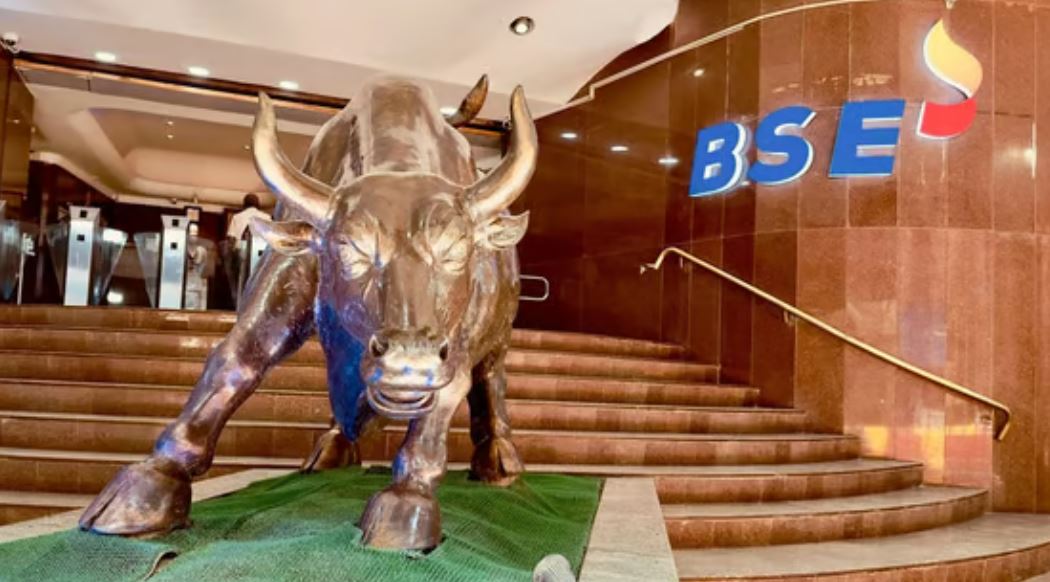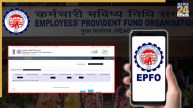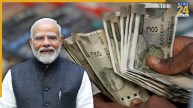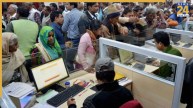Indian capital market appears to be on an escalator that is scaling dizzying heights at an incredible speed. It was the tenth consecutive day on Monday when the Bombay Stock Exchange kept on spiraling and registered an increase of 194.07 points or 0.24% to close at a record high of 82,559.84 points. It fell a little bit on Tuesday for technical corrections, but the overall sentiment of the market remains bullish. It has happened at a time when the Indian economy has registered a GDP growth rate of 6.7%, the lowest level in 15 months. It has been accompanied by a rise in unemployment, a hike in inflation backed by a soaring Consumer Price Index, a slowed-down rural economy, and a faltering manufacturing sector. The farm sector too has been performing poorly.
Sensex, Nifty Soar To New Heights
The National Stock Exchange also registered a continuous hike in the share prices on Monday, its index Nifty climbed 42.80 points or 0.17 % and settled at a lifetime closing high of 25,278.70. In a 13-day gaining streak in the stock exchange since August 14, the Nifty has rallied 4.72% or nearly 1,140 points. The BSE benchmark has jumped 2.65% or 2,135.16 points in its 10 straight days of gains.
Why Stock Markets Are Not In Sync With Economy?
It can be asked why the stock market is not in sync with the Indian economy. How is it possible that the stock exchanges have adopted an extremely bullish approach and scaling a new height almost every day while the GDP growth rate has come down?
FIIs Invest Rs 17.27 Lakh Crore
If media reports are to be believed, Foreign Institutional Investors (FIIs) have invested Rs 17.27 lakh crore or US$ 206.7 billion in Indian stocks in the financial year 2023-2024. They withdrew ₹7,693 crore from the Indian stock market by the quarter ending June. This led to a decline in their share to a 12-year low of 17.38% from 17.72% in the March quarter of the financial year.
China Crisis Helps Indian Stock Market
These FIIs invested money in the Indian stock exchanges after pulling out some money from the stock markets of Taiwan, South Korea, China, and Brazil. While Brazil is facing political problems along with increasing economic woes, the growth rate of China has come down considerably. Taiwan is at the center of controversy due to its disputes with mainland China.
FIIs Invest Rs 32,000 Crore In 12 Days
If media reports are to be believed, FIIs invested Rs 32,000 crore during the period of these 12 days when the stock markets were put on fire.
But the biggest support Indian stock markets got has come from the US. Ironically, the US economy has slowed down and the Wall Street witnessed a blood bath in the first week of August. Many of the institutional financial investors have taken out money and put in the Indian stock exchanges.
US Fed Rate Cut To Help India
Secondly, immediately after the meltdown in the US stock markets, Federal Reserve Chairman Jerome Powell indicated a cut in the interest rates. The meeting is scheduled to be held on September 17-18 and the Fed is most likely to slash the rates. However, analysts have pointed out that if the Fed cuts the bank rates by 50 basis points, it would not help a late. Experts believe that ideally, the interest rates should be around 3% to 3.5%.
Will BSE Sensex Cross 85,000-Mark?
Indian stock markets will depend much on when and where the bank rates are slashed in the US. Secondly, it will also be dictated by how much cut is announced. Experts believe that initially, the rate cut would not be more than 50 basis points. If it happens, the institutional investors are most likely to take out money from the US stock markets and invest in India. But as the cut is not supposed to be too deep, the Indian stocks may not get a great fillip. So, the market will certainly go up, but it may not be surprising. So, the BSE Sensex will certainly go up further and may cross the 85,000 mark.













